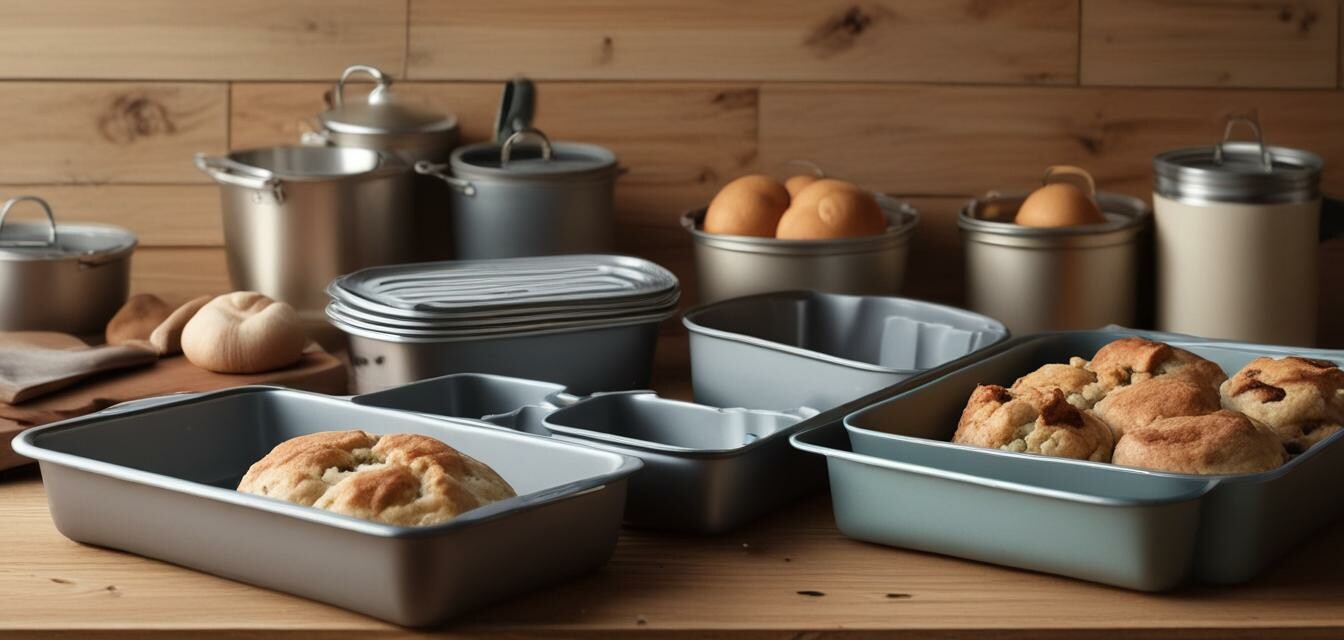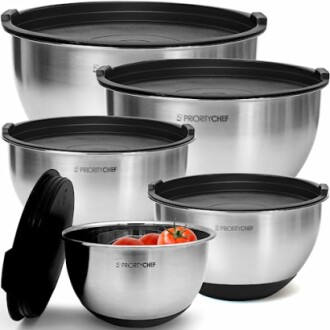
The Ultimate Guide to Baking Pans
Key Takeaways
- Understanding the different types of baking pans is crucial for successful baking.
- Cake pans, loaf pans, and muffin tins serve various baking needs.
- Material and size matter: choose based on what you're baking.
- Quality pans can enhance your baking results.
- Consider features like non-stick coatings and durability.
In the world of baking, the right tools can make all the difference. Whether you're a budding baker or a seasoned expert, having the proper baking pans is essential for achieving delicious results. This guide will take you through the various types of baking pans available in 2025, helping you select the perfect ones to add to your kitchen arsenal.
Types of Baking Pans
| Type of Pan | Description | Best For |
|---|---|---|
| Round Cake Pans | Typically made of metal or glass, used for baking layer cakes. | Layer cakes, cheesecakes |
| Square and Rectangular Pans | Good for brownies, bar cookies, and casseroles. | Brownies, cornbread, lasagna |
| Loaf Pans | Great for making bread, meatloaf, and pound cake. | Quick breads, meatloaf |
| Muffin Tins | Holds multiple small portions, ideal for muffins and cupcakes. | Muffins, individual cakes |
| Baking Sheets | Flat, rectangular pans for cookies, pastries, and roasting vegetables. | Cookies, roasted vegetables |
Round Cake Pans
Round cake pans are a staple in any baker's kitchen. Typically available in various sizes, they allow you to create layered cakes by stacking multiple rounds. Consider using a Priority Chef Premium Stainless Steel Mixing Bowl Set to mix your batter effortlessly.
Priority Chef Premium Stainless Steel Mixing Bowls With Airtight Lids
These mixing bowls offer thicker steel construction and a non-slip base, perfect for your baking prep needs.
Explore NowSquare and Rectangular Baking Pans
These pans are versatile and can double as casserole dishes. They're particularly good for baking brownies, as their straight edges yield perfectly squared treats.
Loaf Pans
Perfect for homemade bread and meatloaf, loaf pans come in various materials, including non-stick, which can help with easy release.
Muffin Tins
Muffin tins are a must-have for baking muffins, cupcakes, and even mini quiches. Most come with six or twelve cups, allowing for batch baking.
Baking Sheets
Baking sheets are primarily used for cookies and pastries but can also be employed for roasting vegetables or meats. Using silicone baking mats can provide a non-stick surface.
Materials of Baking Pans
When choosing baking pans, the material is just as crucial as the type. Here’s a quick comparison of common materials:
| Material | Pros | Cons |
|---|---|---|
| Aluminum | Good heat conductivity, lightweight, and affordable. | Can warp at high temperatures. |
| Stainless Steel | Durable, non-reactive, and perfect for high temperatures. | Could be heavier and more expensive. |
| Glass | Provides even heating; also allows you to see the food. | Can shatter if dropped or subjected to sudden temperature changes. |
| Silicone | Flexible, non-stick, easy to clean. | Can be flimsy; not ideal for all types of baking. |
Choosing the Right Size
The size of your baking pans will depend on your recipes and the number of servings you need. Here are some tips on size selection:
- For layer cakes, stick to 8 or 9 inches round cake pans.
- A standard loaf pan holds about 9x5 inches.
- Standard muffin tins generally have 12 cups, suitable for single-serving muffins.
- Rectangular pans are available in multiple sizes; 9x13 is great for brownies and casseroles.
Caring for Your Baking Pans
Caring for your baking pans will prolong their life and maintain their performance. Here are some tips:
- Always follow the manufacturer’s instructions for cleaning.
- Avoid using metal utensils on non-stick surfaces to prevent scratching.
- Store your pans in a dry place to avoid moisture buildup.
- Use parchment paper or silicone mats for easy baking and cleanup.
Conclusion
With a variety of baking pans available, it’s essential to choose the right ones that suit your baking style and needs. Understanding the purpose of each type and their material will help you make informed decisions. Happy baking!
